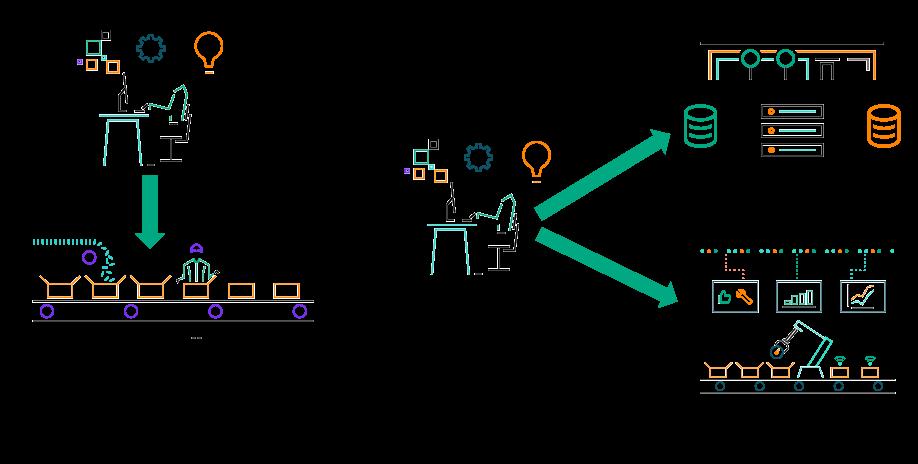
2 minute read
Harnessing the full power of AI capabilities
FIGURE 1. Critical phases of AI deployment
AI adoption is an enterprise-wide initiative. Mapping the AI journey is a strategic way to streamline and simplify AI usage from end to end—for data scientists monitoring sophisticated analytics programs, to IT teams focused on optimizing vital resources for AI projects, to executives deriving business value from AI by leveraging data-driven outcomes.
Advertisement
Training and inference are the cornerstones of machine learning and deep learning model development and use, both of which are compute-intensive and data-heavy workloads that require exceptional capacity, acceleration, and durability. AI training is the crucial step to derive insights, where algorithms and models, using massive amounts of data, are created for a variety of applications. AI inference workloads use trained models to make predictions, forming the backbone of any AI-enabled application.
The new frontier of AI is driving a major paradigm shift in countless markets worldwide. Major industries such as Financial Services, Government, Energy, Retail, Healthcare, Media & Entertainment, and Manufacturing are making AI a top priority. Enterprises across these industries are pursuing rampant automation and innovation, positioning themselves to lead the market with AI proficiency and revolutionary insights.
In the Financial Services space, AI applications are being deployed to proactively monitor insider trading, collusion, and improper investment management practices. With the combination of vigorous compute platforms and analytics tools, financial institutions have the ability to train AI models with a constant stream of data inputs. Once validated, the models are used to perform inference in order to identify and stop suspicious activity in real time. These pioneering capabilities are currently used to monitor hundreds of traders across email and IM, with voice monitoring applications coming in the near term. The next stage of innovation will enable monitoring thousands of traders around the globe in a dozen languages.
In Healthcare, enterprises are utilizing machine learning and deep learning to usher in a new era of patient care. AI tools are processing troves of sensitive information, using the data to train sophisticated AI models to recognize patterns and abnormalities in treatment plans, medical imaging, patient care, medical histories, drug referrals, and numerous other use cases. Once trained, these models are used to predict outcomes with extreme accuracy. This transformation is paving the way for personalized medicine in which healthcare institutions can treat patients remotely, perform autonomous robotic surgery, and much more. Deep learning workloads are highly compute-intensive, so powerful technology tools and modern IT infrastructures are a prerequisite for healthcare providers looking to augment their current capabilities with AI. These high-level techniques require not only extreme, massively parallel processing performance for training deep neural networks, but also cost-effective compute platforms for inference. This means that customers still operating with legacy IT infrastructures or limited technology capabilities are typically locked out from using AI and deep learning, and are left to continuously struggle with poor performance, low efficiency, and slow time-to-value.
Retailers are also experiencing massive changes as AI capabilities enable the next wave of smart Retail. With intelligent video analytics (IVA) and real-time customer and store analytics, companies are dramatically improving margins and enhancing the shopping experience. AI-powered solutions are empowering the Retail industry with deeper insights into their operations, paving the way for game-changing innovations—from intelligent forecasting and inventory management, predicting customer preferences to deliver online and in-aisle promotions, to robotics and smart assistants freeing up human resources to focus on customer needs. The possibilities of AI are limitless.




